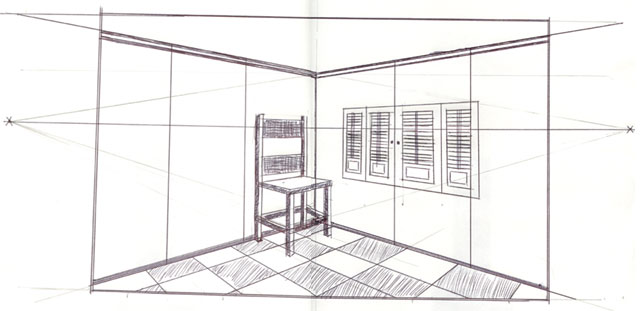|
The number of points in a perspective drawing relates to
how the three axes, representing width, height and depth, are seen.
In one-point perspective (top left drawing) there is a single
vanishing point representing the depth. The width and height are
seen as horizontal and vertical lines, respectively, parallel to the
picture plan.
For two-point perspective (middle right drawing) there
are two vanishing points used to give the representation of depth.
The vertical (height) dimension is the only one viewed parallel to the
picture plane (straight on). The width and depth are represented
using oblique (angled) lines vanishing to one of the two points.
Three-point perspective (bottom left drawing) has none
of the dimension view straight on and has three vanishing points, one for
each dimension. In three-point perspective, the horizon is either very
high looking down or very low looking up. The third point is
actually off the bottom of the page. |


























